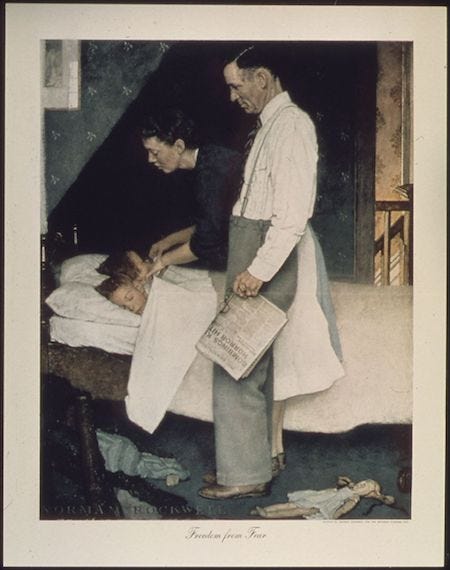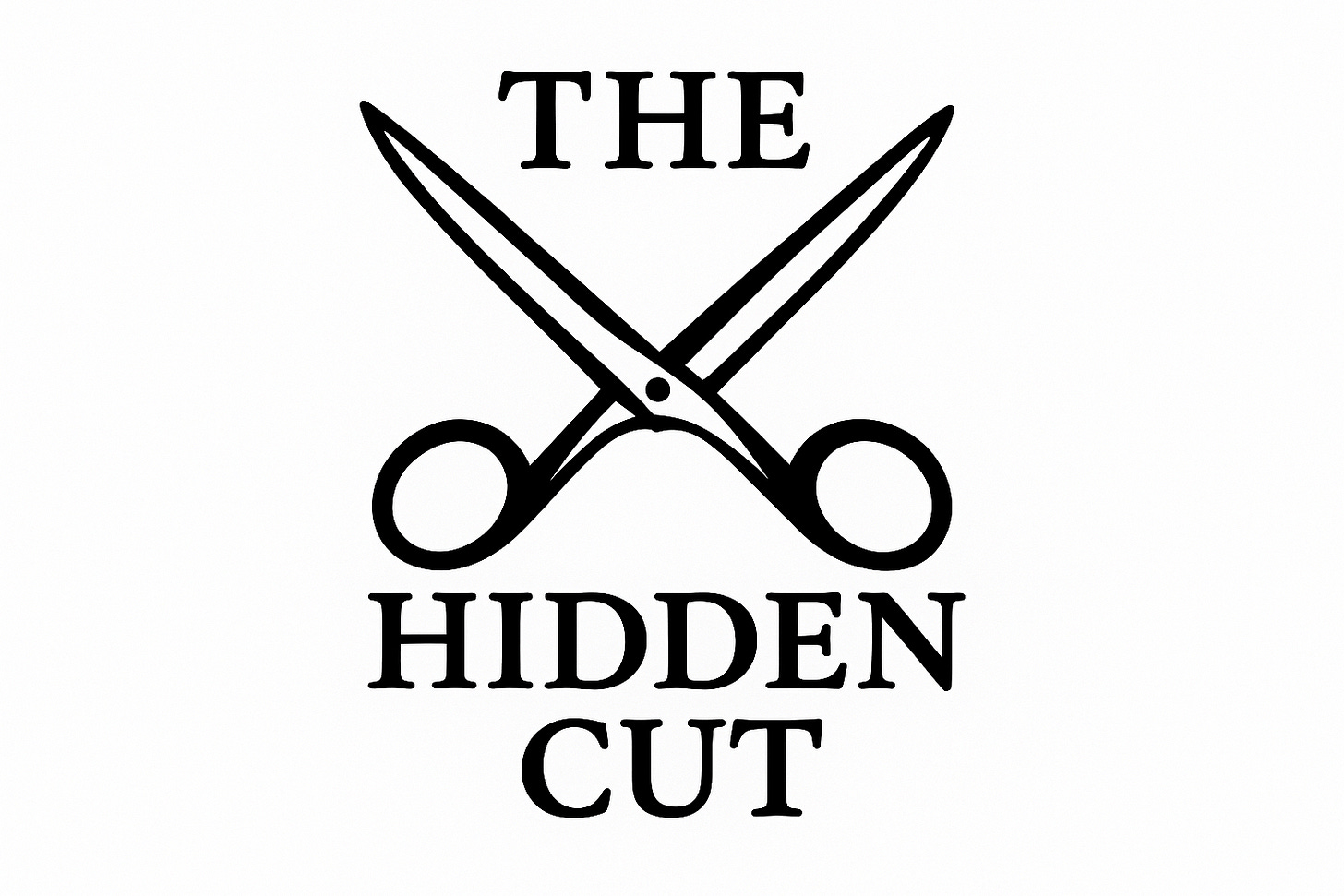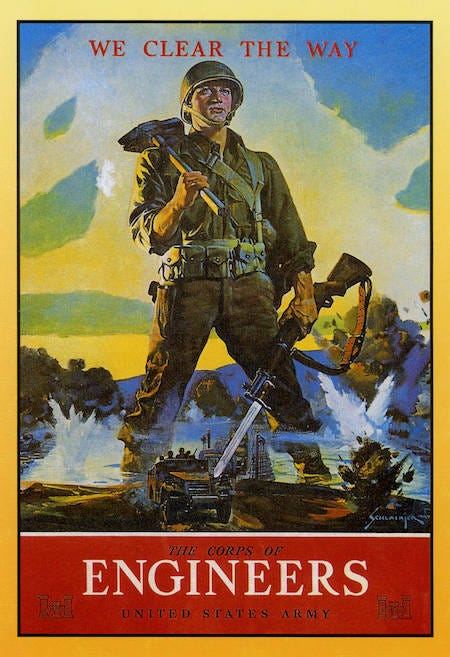You know, when I first started researching this topic, I wasn’t expecting it to floor me. But it did. It shocked me—deeply, viscerally—but in a strange way, I’m grateful. Because that shock cracked something open. And through that crack came something I didn’t know I’d been withholding: empathy.
Empathy for the average American man.
Now, look—I’m not saying the American man is perfect. He’s not. But in recent years, it’s become pretty trendy to dismiss him altogether. Mock him. Blame him. Cancel him. And while some of that criticism has been earned—let’s be honest—it’s also created a bit of a blind spot.
Listen to the podcast episode here.
My father was an American man. My husband is an American man. My brothers-in-law, my nephews, my extended family—they’re all part of this cohort I’ve been culturally conditioned to be skeptical of. But this deep dive gave me something I didn’t expect: an excuse to finally cut the guys a break.
And once I did, something else happened. I started to see him—not as a meme or a menace—but as a product. A patient. A pawn.
And this is the episode where we start asking: What did we do to our men? And what would it mean if we actually stopped long enough to see them clearly?
✂️ Quick cut: If you’re enjoying this, become a paid subscriber. These essays take time to research and write—and your support keeps the scissors sharp. Also, subscribers get early access to all content.
Subscribe to follow the thread—from laugh tracks to foreskins to the emotional fallout we’re only just beginning to name.
The Invention of the American Man
So who is the American man?
Not the one on your dating app. Not the one on the billboard holding a burger and a Bud Light. And definitely not the one in that self-pitying podcast with a $400 mic and zero friends.
I mean the archetype. The myth. The mold.
The American man was not born—he was built. Factory-forged, like a Ford truck ad. And just like a truck ad, he had to project strength, reliability, and just enough stoic sadness to make him buy things.
You see, the modern American man is a post-war product. After World War II, the government and media collaborated—intentionally or not—to produce a man who would be good at two things: working and not talking about his feelings. That’s it. That was the brochure. Everything else—humor, hobbies, even sex—was accessory.
He was never supposed to be deeply known. Just respected, feared a little, maybe loved—if he played his cards right.
And it worked—for a while.
But somewhere between Father Knows Best and Fight Club, something broke. The strong, silent type became the absent, alienated type. His kids didn’t understand him. His wife resented him. And eventually, the culture turned on him.
By the time we reached the aughts, the American man had become a punchline.
A frat bro. A “nice guy.” A bad boy. A gangster. A war criminal. A player.
He was the poster child for everything from suburban apathy to urban menace—from clueless privilege to violent rebellion. He became a stand-in for everything oppressive. A walking red flag. A problematic disappointment.
He went from being the hero of the American story… to the villain of everyone else’s.
And through all of this, he stayed silent. Because that’s what he was trained to do.
But what if—just what if—underneath all that silence, under the camouflage of patriarchy and performative confidence, there’s a wound? A real one.
And what if circumcision wasn’t just the start of that wound—but a symbol of everything he was expected to endure without complaint?
This episode is where we ask: what if the American man didn’t fail us? What if we failed him?
The Wound He Couldn’t Remember
From the very beginning, the American man was taught one thing above all else: Don’t make a fuss.
That lesson came early—sometimes on day one. While his mother lay recovering from the birth, groggy and overwhelmed, someone wheeled her son away. A nurse, a clipboard, a little formality, and then the snip.
It was framed as routine. Clean. Clinical. A matter of hygiene, or culture, or God—depending on who you asked. But to the baby? It was none of those things. It was just pain. Unexplained, unacknowledged, unforgettable—even if he couldn’t articulate it.
Doctors used to claim infants couldn’t feel pain. That was the official line. No need for anesthesia. No need for concern. They’ll forget. They always forget.
But here’s the thing: the body remembers. The nervous system remembers. Even if the conscious mind can’t access the file, the body has it bookmarked.
What does it do to a boy to be wounded before he even knows how to speak And what does it mean that no one around him acted like it mattered?
It sets the tone.
It teaches him, This is how we do things here. This is how pain is handled: quietly, efficiently, and without witness. No one will talk about it. And later, if you ever try, they’ll call you dramatic. Or worse—unmanly.
It’s not just that his pain was dismissed—it’s that it was packaged as care. A betrayal in a white coat. And the first of many times he’d be expected to confuse injury with initiation.
From locker room hazing to corporate burnout, from suppressed grief to performative sex, the message stayed the same: take it like a man.
But what if that message is the problem? What if that first silent scream—the one no one came for—echoes through every part of his life?
And what if the American man never had the language to say: That hurt me.
A Man Without A Mirror
One of the cruelest tricks played on the American man was convincing him he was always in control—even as everything around him told him otherwise.
He was told to be the provider, but not taught how to emotionally provide for himself. He was told to lead, but given no map. He was told to protect, but never shown how to be safe.
And so he improvised. He puffed up his chest. He clung to what power he could. He built identity out of work, out of conquest, out of silence. He traded softness for sarcasm. Vulnerability for bravado.
Because what choice did he have?
If he didn’t perform manhood the right way, he risked being seen as less than. If he did perform it too well, he risked being seen as dangerous.
He couldn’t win.
And all the while, something kept gnawing at the edge of his awareness—that maybe he was never really free. Not free to feel. Not free to question. Not even free to fully know himself.
Especially when it came to his body.
The irony is brutal: the very part of himself that is supposed to symbolize masculinity was altered before he could consent. Modified by someone else’s standard. Removed from its original design. And then—forgotten.
And when he finally did start to question it—if he ever dared—he was met with shrugs, eyerolls, even ridicule.
“It’s not a big deal.” “Looks better.” “Women prefer it.” “You’re lucky you don’t remember.”
But what if he isn’t lucky? What if the forgetting is part of the trauma?
Because to forget something painful isn’t the same as healing from it. And when society tells you that your pain is imaginary, you stop trusting your instincts. You start living in exile from your own experience.
This is what we mean when we say a man without a mirror. He sees reflections—cultural ones, pornographic ones, performative ones—but not his own truth. And without truth, healing becomes impossible.
But that’s the thing about truth. It’s patient. It waits.
And when a man finally finds the courage to look inward—not for judgment, but for understanding—that’s where healing begins.
The Reclamation
So now what?
We’ve traced the wound. We’ve acknowledged the silence. We’ve stared directly into the cultural fog that surrounded the American man for generations.
And here’s where it gets exciting—because once you name a spell, it starts to break.
The truth is: the American man is not beyond repair. He’s not broken. He’s been disoriented—cut off from his own story. But the moment he begins to ask questions, real ones, the recalibration begins.
Why was this done to me? Why don’t we talk about it? What else have I accepted that I never agreed to?
Questions like that aren’t just personal—they’re revolutionary. Because the man who starts asking them becomes harder to manipulate. Harder to numb. Harder to market to. And much harder to shame.
And what I love most is that this shift—this healing—it doesn’t require him to become someone else. He doesn’t need to reinvent masculinity from scratch. He just needs to remember who he really is beneath the programming.
That starts with curiosity.
It starts when a man hears about circumcision not as a footnote in medical history, but as something worth thinking about deeply—for the first time in his life.
It starts when he realizes he’s not alone. That his discomfort isn’t weakness. That questioning isn’t betrayal. It’s integrity. And it starts when the people around him—his partners, his sisters, his friends—finally say: I see you. I’m sorry. And I’m here.
Because empathy is contagious. It doesn’t just heal the one who receives it. It heals the one who offers it, too. This journey cracked me open in ways I didn’t expect. But in that rupture, I found room for grace. For my father. For all the men in my family. For the men I’ve dismissed or misunderstood.
And for the boy inside the man—who didn’t get a say. Now, at last, we’re ready to listen.
So, if you would, please indulge me for engaging in a brief Carrie Bradshaw moment…
I couldn’t help but wonder… maybe the real revolution wasn’t about removing power from men. Maybe it was about giving them back something they never should’ve lost in the first place—the right to feel.
Final Reflection: The Right to Feel
And so, we arrive at the end of Season One of The Hidden Cut: American Cut. Thank you for having the patience and curiosity to take this journey with me.
We’ve looked at circumcision through the lens of history, medicine, marketing, psychology, pornography—even pop culture. We’ve followed the money. We’ve questioned the myths. We’ve cracked jokes and broken silences.
And maybe we’ve started to see something that was hiding in plain sight all along.
This isn’t just about foreskin. It never was.
It’s about agency. It’s about power. It’s about what happens when we’re too afraid—or too conditioned—to ask the obvious question:
Why are we doing this?
And now that we’ve asked it in the context of modern America, we’re ready to go deeper. Way deeper.
Because if Season 1 was about what was done to us, Season 2 is about what was done for God.
We’ll explore the religious roots of circumcision.
We’ll look at ancient rites of passage and how they’ve evolved—or stayed hauntingly the same.
We’ll examine scripture, tradition, and the uncomfortable intersections between the sacred and the surgical.
We’ll talk about ritual blood. About covenant, identity, and how beliefs become embodied—sometimes violently so.
And we’ll ask: What does it mean to sacrifice a part of the body in the name of faith? Who gets to decide? And what happens when ancient rituals collide with modern questions of consent?
Season Two of The Hidden Cut: Sacred Flesh begins soon.
Bring your curiosity. Bring your courage. And bring your willingness to see the sacred—without looking away from the scar.
Season 1 of The Deeper Read is live now.
We’re starting at the very beginning—Genesis. But not as you’ve heard it. This season unpacks the “greatest hits” of the Old Testament like a mystery series, decoding the stories, characters, and covenants that shaped civilization.
It’s Scripture, but sliced open and seen fresh. Join us every week as we follow the bloodline, trace the breaches, and ask the questions nobody else will.
Until then, I remain yours truly,
Lisa
🎬 Continue the Series
← Previous Episode: The Choice Cut
→ Next Episode: The Power of Translation (The Deeper Read, Episode 1)
📂 Full Episode Guide: Cold Open
Think something got left on the cutting room floor?
Add your notes below—we’re still editing in real time.











